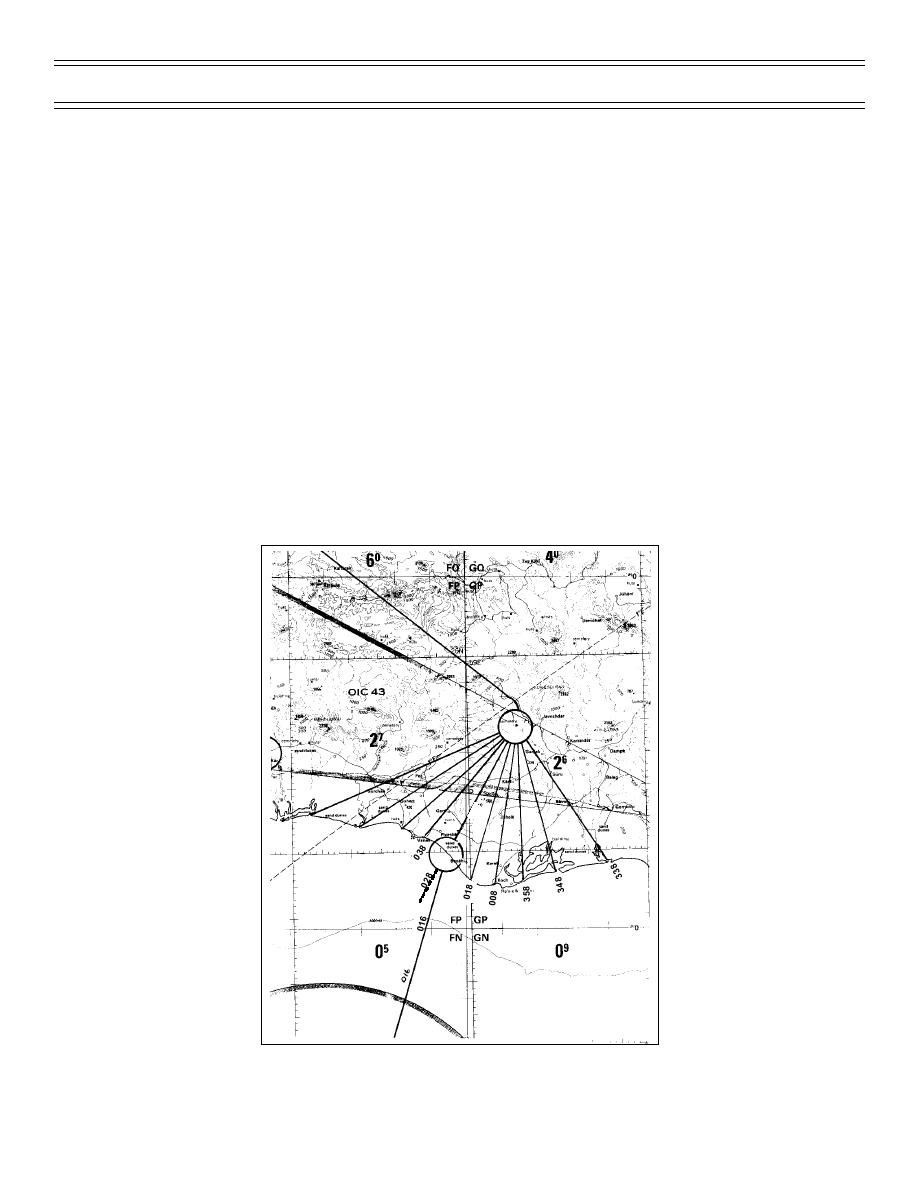
Flying the Route
Operational Navigation Flight Training Instruction
Roads
It is quite possible that your route will parallel a road or railroad for a leg or considerable portion of a leg.
In this case, it is important to keep the road in sight while maintaining your correct position and distance
from it. For instance if your course line stays to the left side of the road and never crosses it, then you
should always remain left of the road and never cross it.
Coast-in (Spoke Method)
The spoke method (Figure 4) is used to get onto the proper course after flying for a considerable distance
over water; (as a Naval aviator, you will fly over water a great deal). This involves drawing several spokes
to either side of your planned track to the first inland checkpoint or to a good intermediate checkpoint 10-
20 miles inland from the coast-in point. As a rule of thumb, draw lines every 10 degrees of heading on
each side of your coast-in point. Draw them to the sides for a distance of 10% of distance flown over
water or between the planned coast-in point and positive landmarks on each side. This is called the
“spoke method” because the course lines converge on the first inland checkpoint. You can choose
checkpoints on the coast to draw the spokes from if you have good, positive checkpoints. Measure
heading for each spoke as you would for any course line. Use your judgment when actually flying such a
route; it may be better to parallel the planned course rather than make a correction if you are not exactly
sure where you are.
068
8
8
05
04
Figure 4: SPOKE METHOD OF COAST-IN
(7-99) Original
Page 15


 Previous Page
Previous Page
